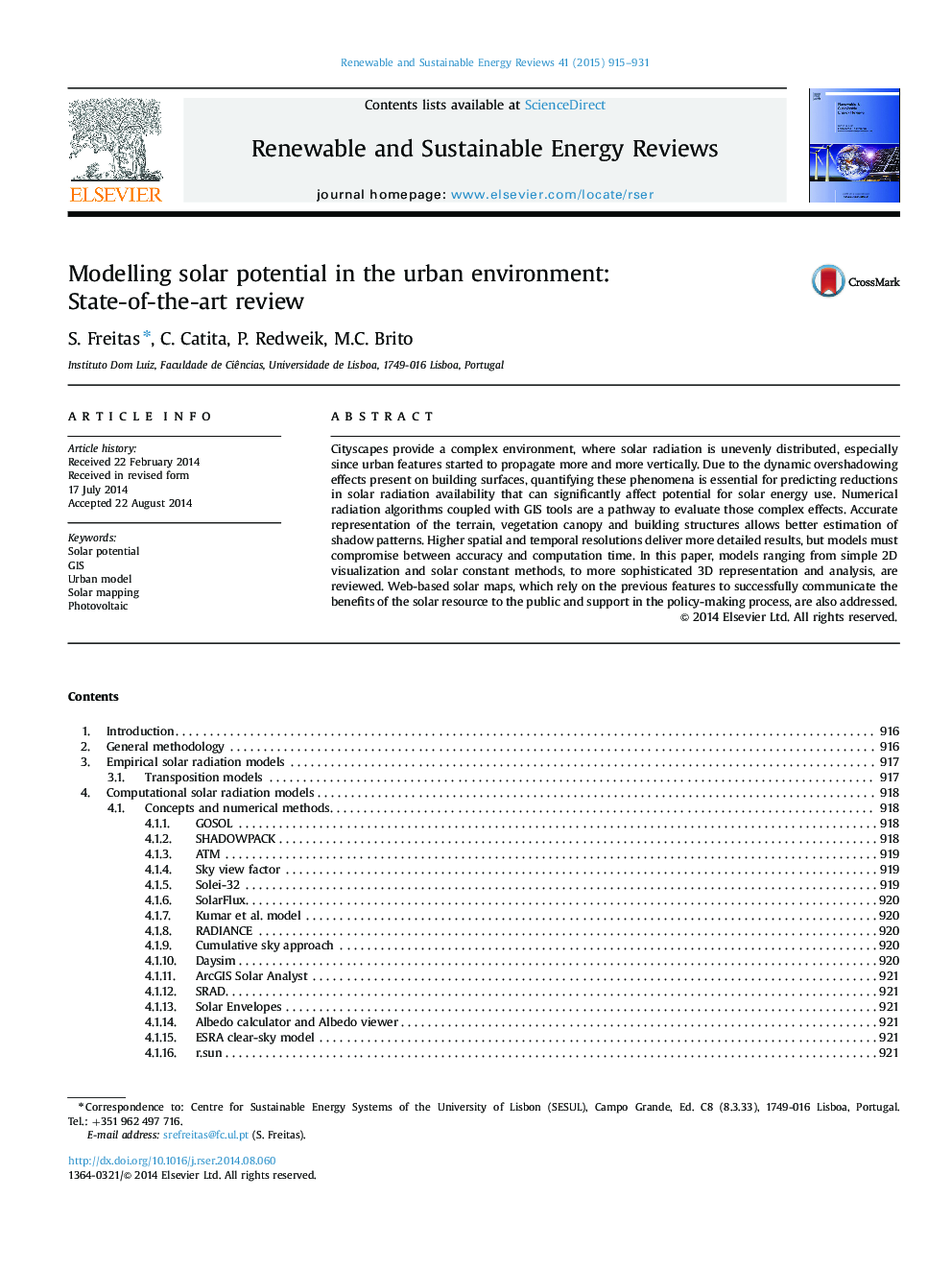| Article ID | Journal | Published Year | Pages | File Type |
|---|---|---|---|---|
| 8118692 | Renewable and Sustainable Energy Reviews | 2015 | 17 Pages |
Abstract
Cityscapes provide a complex environment, where solar radiation is unevenly distributed, especially since urban features started to propagate more and more vertically. Due to the dynamic overshadowing effects present on building surfaces, quantifying these phenomena is essential for predicting reductions in solar radiation availability that can significantly affect potential for solar energy use. Numerical radiation algorithms coupled with GIS tools are a pathway to evaluate those complex effects. Accurate representation of the terrain, vegetation canopy and building structures allows better estimation of shadow patterns. Higher spatial and temporal resolutions deliver more detailed results, but models must compromise between accuracy and computation time. In this paper, models ranging from simple 2D visualization and solar constant methods, to more sophisticated 3D representation and analysis, are reviewed. Web-based solar maps, which rely on the previous features to successfully communicate the benefits of the solar resource to the public and support in the policy-making process, are also addressed.
Related Topics
Physical Sciences and Engineering
Energy
Renewable Energy, Sustainability and the Environment
Authors
S. Freitas, C. Catita, P. Redweik, M.C. Brito,
